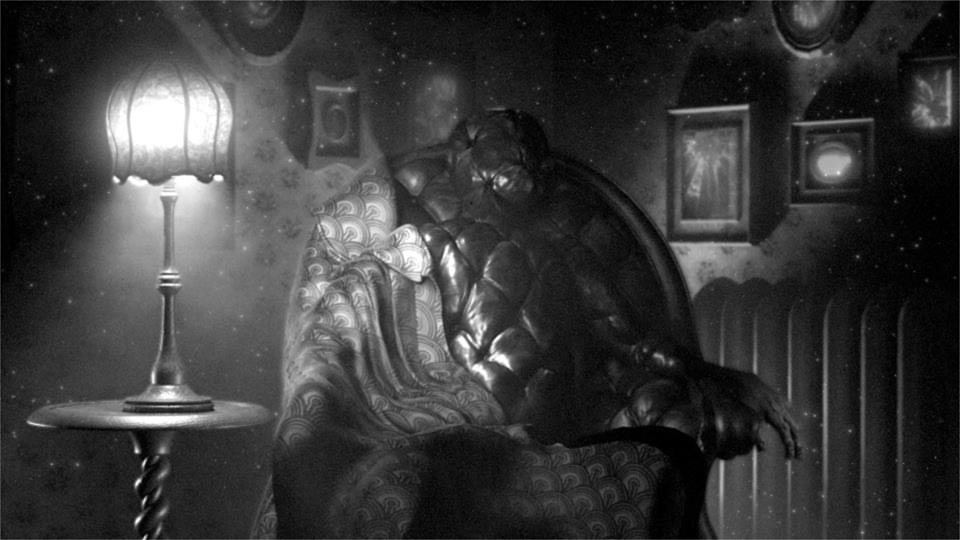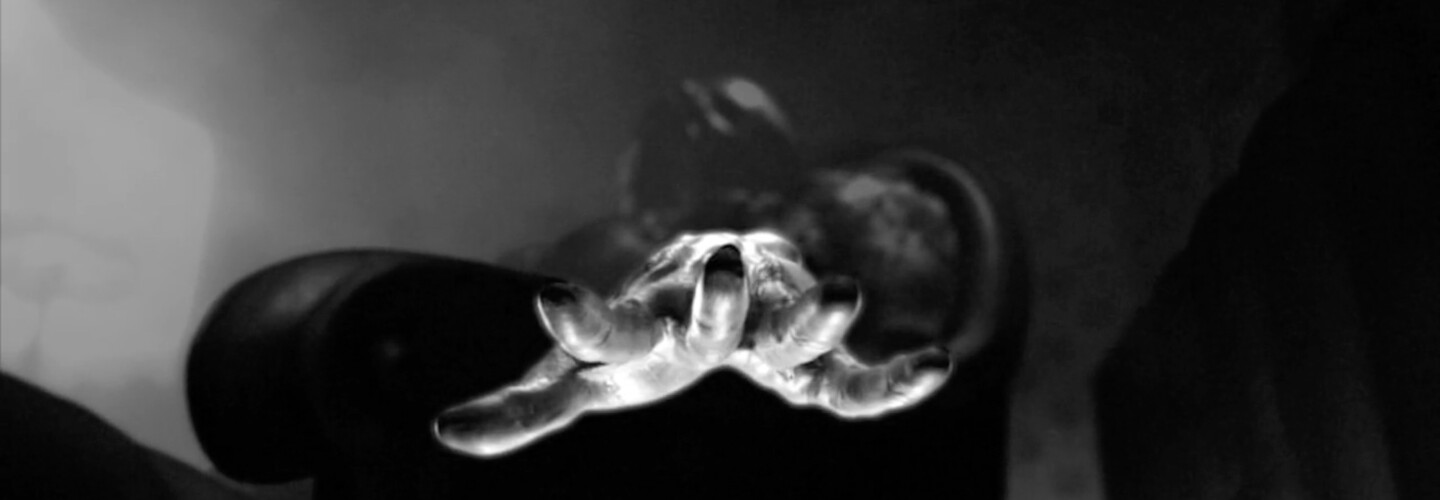
Billed as a ‘concoction of horror, eroticism and haunted electronics’, Chicago filmmaker Rhys Bevan’s experimental 3D animation Underfoot sees a snaking plug rejected by an incompatible socket and a trapped sinister conciseness making a bid for freedom. Or at least that’s what I think happens, it’s probably better if you watch it and then let Rhys take you through how it all came together.
The initial concept for Underfoot came while I was still getting my BFA at the School of the Art Institute of Chicago. At the time I was watching a lot of old Fleischer brother cartoons. Conceptually speaking, those films are amazingly layered and dimensional. The cute designs hide a world of anger, violence and poetry. I was also watching old expressionist films from the 30s and 40s. These two sources created the initial thrust of the project – an animation that would play off the cliche of the anthropomorphized object, but would bring forth the more formal and cinematic qualities of expressionist cinema. The concept from the beginning was about a relationship between an incompatible plug and socket, and a sleeping man in the room that enforces violence.
I was still learning the tools, and ultimately what I left school with was a half finished animated storyboard, some basic models and no score. Obviously, this was a far-cry from what I wanted. Being on my own at this point is when I really started to have fun. The project was no longer in the context of a class with deadlines, so I could afford to experiment with the piece more aggressively and ignore any idea of a ‘production pipeline’. As a 3D artist, I can’t stand the production pipeline. I have respect for it in the context of a large commercial project, where a conventional result is desired but personally speaking, I feel it enforces major constrictions on the true nature of 3D animation. In the case of my film, I wanted to continually shape and re-shape ideas and meanings right till the very end. 3D software can give you this freedom in a way live photographed material can’t.
The ideas continued to layer in an organic way. The presence of the rocking horse came after watching the film The Rocking Horse Winner, the floating ‘ball wigs’ after seeing a photograph by Nina Leen. One of the final layers where augmented elements of Dziga Vertov’s 1929 film Man with a Movie Camera – a film that exists in the Public Domain. I felt using shots from that film of machinery in motion was a good parallel, visually and conceptually to the violence of the plug attacking the socket.
Having had no musical training, the score was a result of pure experimentation in Logic Pro drawn out over the entire project. I have a Zoom H4N field recorder that I used to capture soundbites from a random selection of objects and even some rented instruments.
All these ideas where building towards the notion that the room itself is the main character and all the little characters within are fragments of something larger; a consciousness that wants to break out, be born anew, and be whole, even at the cost of violence and oppression.
Ultimately, it would take roughly 20 months after graduating to continue to learn the tools (Maya, ZBrush, Phototshop, Shake and Final Cut), and get the film to the place it needed be. I was freelancing the entire time, which also functioned as a way to better learn the software.
Making this was a true journey. I’m not the same as I was when I started, nor is the film. All the elements would slowly layer on top of one another and congeal. In retrospect the process felt more like growing something as opposed to neatly and efficiently carrying out a concept; like watching mold grow in a piece of tupperware in the fridge. In this regard I’m really happy with the result and the way I went about making this project. I’m content with my little patch of weird mold.






